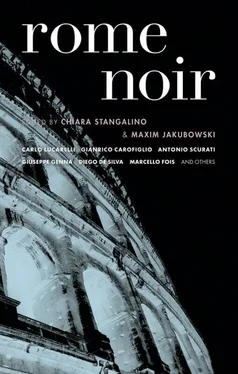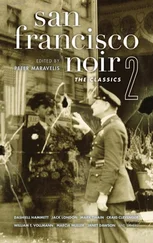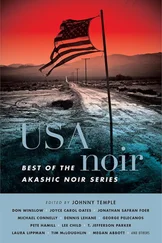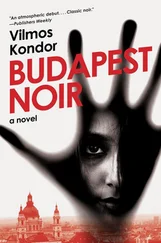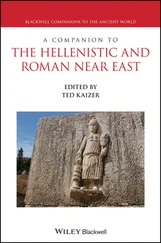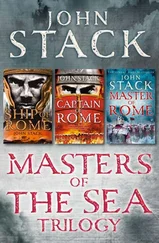Джанрико Карофильо - Rome Noir
Здесь есть возможность читать онлайн «Джанрико Карофильо - Rome Noir» весь текст электронной книги совершенно бесплатно (целиком полную версию без сокращений). В некоторых случаях можно слушать аудио, скачать через торрент в формате fb2 и присутствует краткое содержание. Город: New York, Год выпуска: 2009, ISBN: 2009, Издательство: Akashic Books, Жанр: Детектив, на английском языке. Описание произведения, (предисловие) а так же отзывы посетителей доступны на портале библиотеки ЛибКат.
- Название:Rome Noir
- Автор:
- Издательство:Akashic Books
- Жанр:
- Год:2009
- Город:New York
- ISBN:978-1-933354-64-4
- Рейтинг книги:3 / 5. Голосов: 1
-
Избранное:Добавить в избранное
- Отзывы:
-
Ваша оценка:
- 60
- 1
- 2
- 3
- 4
- 5
Rome Noir: краткое содержание, описание и аннотация
Предлагаем к чтению аннотацию, описание, краткое содержание или предисловие (зависит от того, что написал сам автор книги «Rome Noir»). Если вы не нашли необходимую информацию о книге — напишите в комментариях, мы постараемся отыскать её.
Rome Noir — читать онлайн бесплатно полную книгу (весь текст) целиком
Ниже представлен текст книги, разбитый по страницам. Система сохранения места последней прочитанной страницы, позволяет с удобством читать онлайн бесплатно книгу «Rome Noir», без необходимости каждый раз заново искать на чём Вы остановились. Поставьте закладку, и сможете в любой момент перейти на страницу, на которой закончили чтение.
Интервал:
Закладка:
Rome Noir

Introduction
Cradle or Grave?
Rome: The cradle of civilization or just another city with a dark side, a secret life?
Well, something of both.
The flocks of tourists who visit the city today see the obvious monuments to a lost age, the innumerable churches, the fashionable shops, the Colosseum, the Via Veneto, the Piazza Navona, the Spanish Steps, and the quietly coursing Tiber River that bisects the city. They line up single file for hours on end to enter the Vatican, and it must all feel — at least to the more cinematically literate of them — like stepping into a Federico Fellini movie. They walk around, awed by the timeless majesty of the old stones, walls, and busy streets; they enjoy wonderful food, take countless photographs, and retreat with tired souls and feet to their hotel rooms or pensiones, and then all too quickly it’s time to go home and leave the splendor of Rome behind.
But how much have they really seen of the city, the dimension in which actual contemporary Romans live? Unless they have a solid acquaintance with resident Italians and are invited into their homes and shown what lies beyond the shiny façade of postcard Rome, they have in fact barely skimmed the surface of this complex city.
The same applies, of course, to many cities, and it’s often only through living in their midst for a substantial period of time that one begins to really “know” a place, to understand its often shocking intimacies.
According to the legend, Rome owes its origins to a murder — when one brother killed another in order to grab the crown. Since then, there has been a dark tapestry of misdeeds, plots, and assassinations alongside some of the cruelest crimes in the history of mankind, beginning with Nero and Caligula, all through myriad bloody Vatican intrigues, wars by the handful, urban terrorism, and the arcane modern collusions between politics and the Mafia.
For some of us walking through the city today, despite the incessant roar of traffic (echoed by so many of the stories in this collection), our imaginations evoke the old Roman Empire (helped in one way or another by images and memories of films and TV shows recreating the glory, the togas, and the slum-level sordidness of antiquity); we dream of the legions marching up the Via Appia back from so many wars, Romulus and Remus and the surrounding hills (which are not always so visible these days if you are staying in the heart of town), the ruthless cruelty of Caesar and Caligula and so many other fabled emperors and dignitaries. Or, if your mind is set to different eras, you may think of the Borgias, or the decadent as well as earnest popes in situations so full of pomp and circumstance, or then again the more recent shadow of Mussolini’s fascists and their relentless program of monument building which still leaves its mark on the city. The possibilities are endless.
But for Romans it’s just another city, the one they live in, where the past is often of little consequence. A city for today, affected by globalization, the ever-shifting Italian rigmarole of politics, a harbor of coffee bars, trattorias, golden youth on motorbikes, a city both old and young. A capital strongly marked by the shadow of today’s waves of illegal immigration and social injustice which color so many of our writers’ sometimes bleak and shocking stories.
The contrast in the stories we have collected is between the glories of the past and a mainly dark and often pessimistic view of the present, in which the frailties of human nature are pronounced. Many of these writers are struck by the poverty that afflicts the lower classes in Rome, gypsies and unwelcome immigrants from poorer countries who congregate here, and this is expressed through the eyes of both visitors to the city and Romans themselves. Through it all looms the crumbling majesty of the Colosseum, the very heartbeat of Rome, which acts as a leitmotif from story to story, alongside the tales of tender and fierce love that this unforgettable capital acts as a background for.
Our writers’ inspiration comes from the walls and streets of Rome, representing the crème de la crème of Italian mystery and mainstream writing, and many of them are permanent residents of the Italian best-seller lists. Umberto Eco recently wrote that “noir literature is a mirror for the state of literature in any given country.” This anthology is, we believe, a strong reflection of the health of Italian writing.
Italian crime writing has always bathed in a sea of social realism, but curiously enough, few major writers in the genre have actually been Roman or written about this place. Turin, Milan, and Bologna, as well as the inevitable Mafia-drenched atmospheres of Sardinia, Naples, and Sicily, have long proven fertile ground for the pens of local crime and mystery writers. There have, naturally, been worthy exceptions, such as the recent success (as both a book and later a powerful movie) of Giancarlo De Cataldo’s Romanzo Criminale, a saga of Roman misfits and criminals that spans several decades. But Italian crime writing has often found its poles of attraction elsewhere, what with Giorgio Scerbanenco’s doughty Milan cops, the Turin and Bologna schools of mystery writing, respectively exemplified by Andrea G. Pinketts and Carlo Lucarelli, and Andrea Camilleri’s strongly ironic view of Sicilian mores.
Which is why several writers were puzzled when we approached them for new stories set in Italy’s capital city.
Should they move one of their characters there? some asked.
Should they write about the Rome a few of them did not know intimately, or should they just write their dream of Rome?
We gave them carte blanche and we think the results speak for themselves. The tales you are about to read are varied, both harsh and funny, poignant and gripping. There is an undeniable renaissance of crime and mystery writing in Italy right now, and we could have invited yet a further fifteen or so additional authors to contribute to this collection if we had enough space; we are confident the ensuing stories would have been as strong as the ones in the following pages.
A handful of the writers who embarked on this adventure have had books already translated into English, while others have not. We hope more of them will find a home in America and Britain as a result of their appearance here.
And next time you are visiting Italy, enjoy your tourist pursuits but on occasion pause for a moment and try and see what lies beyond the corner of the alley or street you are walking down, or attempt to imagine what might be happening beyond those closed curtains you are passing. But until then, let your imagination take a dip into Rome Noir, and travel the city from its trunk roads to its highways, past the notorious Stazione Termini and the shadow of the iconic Colosseum, and through both the fashionable and sometimes undesirable areas that have inspired our writers.
Grazie mille and ciao .
Chiara Stangalino & Maxim Jakubowski
Rome, Italy
November 2008
Part I
Walls & Stones
Pasolini’s Shadow
by Nicoletta Vallorani
Once life is finished it acquires a sense; up to that point it has not got a sense; its sense is suspended and therefore ambiguous.
— P. P. PasoliniTranslated by Anne Milano Appel
Piazza dei Cinquecento
We all drift silently in a world of shadows.
The right night, a place I know. The station hunkers in the heart of this city.
Читать дальшеИнтервал:
Закладка:
Похожие книги на «Rome Noir»
Представляем Вашему вниманию похожие книги на «Rome Noir» списком для выбора. Мы отобрали схожую по названию и смыслу литературу в надежде предоставить читателям больше вариантов отыскать новые, интересные, ещё непрочитанные произведения.
Обсуждение, отзывы о книге «Rome Noir» и просто собственные мнения читателей. Оставьте ваши комментарии, напишите, что Вы думаете о произведении, его смысле или главных героях. Укажите что конкретно понравилось, а что нет, и почему Вы так считаете.
